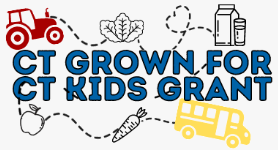Lesson 1: Intro to Agriculture
Agriculture is the practice of farming, including the cultivation of soil for growing crops. In this lesson, students will learn that regenerative farming has been practiced throughout history, across the world, and focuses on soil health, while industrial agriculture is a more recent invention for a globalized society.
Lesson Plan
View Google Doc
Lesson 2: Vinaigrettes and Emulsions
Students will understand how emulsions are made, the ratio of ingredients used to make a vinaigrette, and the options for adding and enhancing flavors.
Lesson Plan
View Google Doc
Lesson 3: Salads and Leafy Greens
This class focuses on the leafy greens commonly used in salads. These greens come in a variety of shapes, sizes, and colors, and are also produced in different ways. Students will consider these different characteristics, and construct salads using a variety of greens.
Lesson Plan
View Google Doc
Lesson 4: Braising and Steaming Plants and Fungi
Plants have evolved in all sorts of ways to survive over the course of their time on Earth. Adaptations that have allowed plants to survive also have applications in the culinary world. Students in this lesson will learn about different plant characteristics and how those make them suitable for the cooking techniques of steaming and braising.
Lesson Plan
View Google Doc
Lesson 5: Roasting Root Vegetables
Root vegetables perform many different functions for both the natural world and us in the kitchen. This lesson reviews characteristics of root vegetables,the function they serve in nature, and how we unlock their potential in the kitchen.
Lesson Plan
View Google Doc
Lesson 6: Herbs and Spices
Herbs and spices are fundamental ingredients in any kitchen. They come from plant parts and many originated in spots around the globe. In this lesson, students will consider the fundamental elements of both herbs and spices, as well as sample a variety of ingredients.
Lesson Plan
View Google Doc
Lesson 7: Tomato Sauce
Tomatoes are a seemingly universal ingredient nowadays, but have a complex history on how they came to be a part of our culinary lexicon. Analyzing a variety of resources, students will consider the diversity of tomatoes and the products we make from them, and how we have ended up with so much choice.
Lesson Plan
View Google Doc
Lesson 8: Jams
This lesson introduces students to the idea of preservation and canning. They will consider what makes something a fruit, and how we use some of the unique properties found in them to produce a bounty of canned jams.
Lesson Plan
View Google Doc
Lesson 9: Baking with Berries & Fruit
Baking with berries and fruit is a common practice in many kitchens across the world. In this lesson students will discuss which of these are available during different seasons, as well as the functions that berries and fruits play in plant reproduction while making a seasonal muffin.
Lesson Plan
View Google Doc
Lesson 10: Beans and Legumes
Beans and other legumes represent a large portion of healthy diets all across the globe, and play a pivotal role in soil health. In this lesson, students will learn about the nitrogen fixing capabilities of beans and how that benefits soil health, as well as the culinary applications for beans and other legumes.
Lesson Plan
View Google Doc
Lesson 11: Fungi
Mushrooms that we eat are part of the vast kingdom of fungi that play such an important role in our environment. Farmers rely on the networks formed by fungi to keep their healthy soil thriving. During this lesson, students will sample a variety of mushrooms after learning basic fungi functions, and describe their tastes.
Lesson Plan
View Google Doc
Lesson 12: Mushroom Soup
This lesson frames mushrooms in the context to the taste they are most associated with: umami. Students will consider how we can identify this flavor, and execute different cooking and preservation techniques using mushrooms.
Lesson Plan
View Google Doc
Lesson 13: Kelp
This lesson will introduce students to how kelp is farmed, the environmental and nutritional benefits of kelp, and how to cook with fresh kelp.
Lesson Plan
View Google Doc
Lesson 14: Plant Part Salad
After learning about plants throughout the unit, students will be tasked with creating a salad using all parts of the plant. Students will develop a set of criteria they will use to assess their salads, after reviewing different plant parts and examples of salads across the world.
Lesson Plan
View Google Doc




